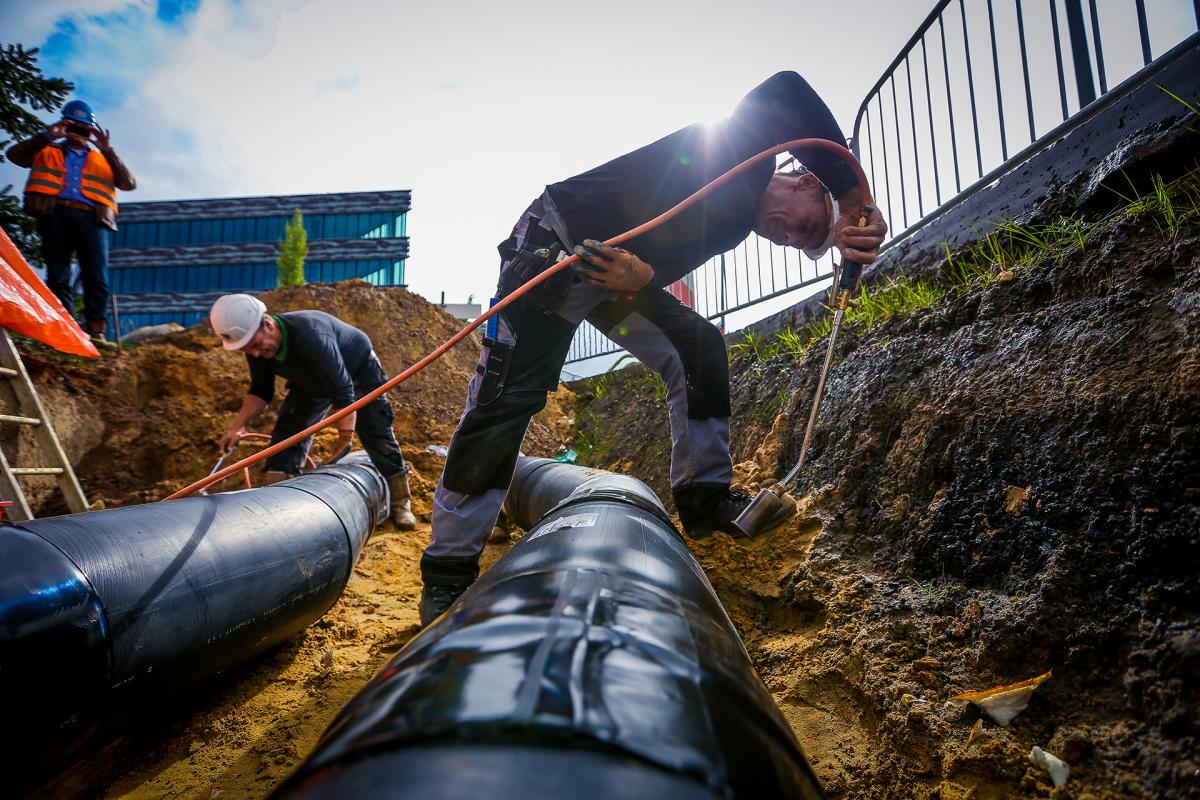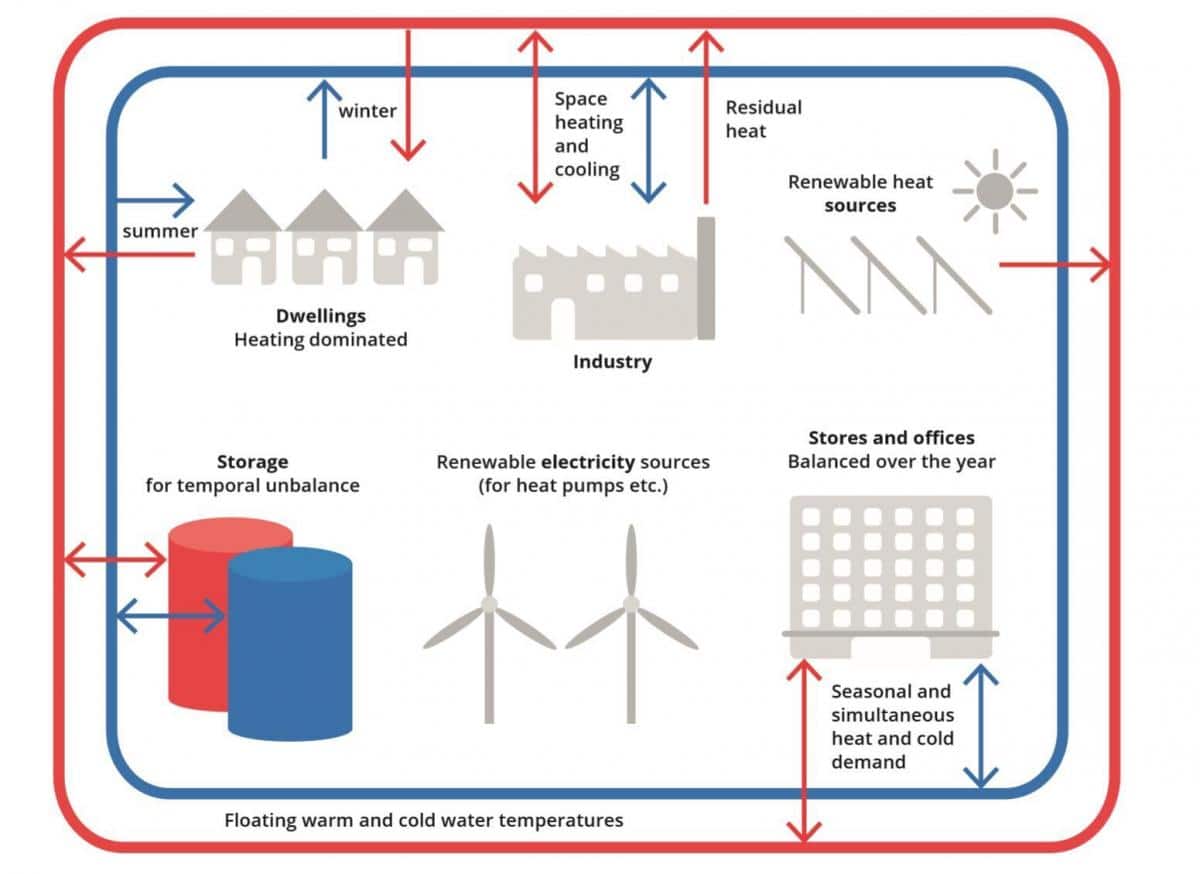D2Grids – Decarbonising the urban building stock with 5th Generation District Heating and Cooling
Heating and cooling account for 50% of the EU’s total energy consumption, but at present only 19.1% of it is sourced from renewables, while in 5 countries out of 7 in North-West Europe the same ratio is below 8.2%. This makes heating & cooling an obvious target sector for efforts to increase the share of Renewable Energy Sources.
Therefore D2Grids aimed to increase the share of renewable energy in North-West Europe’s heating and cooling sector by accelerating the roll out of 5th generation district heating & cooling.
How?
D2Grids did this by rolling out a proven but underutilised concept: 5th Generation District Heating and Cooling (5GDHC). 5GDHC is a highly optimised, demand-driven, self-regulating, energy management system for urban areas.
Due to low grid temperature, low grid losses and efficient heat exchange mechanisms, total energy demand is substantially reduced, which can be effectively and securely supplied by RES, up to 100%.
The objective of D2Grids was to increase the share of RES used for heating & cooling to 20% in NWE 10 years after the project ends, through accelerating the roll-out of 5GDCH systems.
The five partner pilot sites in Paris-Saclay (FR), Bochum (GE), Brunssum (NL), Glasgow and Nottingham (UK) aimed to connect ca. 50.000 m2 of dwellings and/or commercial buildings to a 5G DHC grid.

What is 5th generation District Heating and Cooling?
5GDHC is an urban thermal energy grid for heating and cooling, based on the following principles:
- Ultra-low temperatures close to end-user needs Allowing the use of waste heat and other renewable energy sources.
- Integrated heating & cooling supply, based on a closed loop twin pipe system Enabling heating and cooling exchange between end-consumers.
- Integrated heat and power networks 5GDHC utilises thermal mass of buildings and soil to reduce powerpeaks.
- Demand-driven temperature rise though smart control, data mining and decentralised installations The highest temperature level is only produced where and when needed.

The role of EnergyVille/VITO
Upscaling the technology – boosted by transnational cooperation – enables the consortium to raise the interest of the industry to develop the right products and reduce the costs by 10-20%. EnergyVille/VITO in Belgium was a key project partner for industrializing the 5G DHC concept and to evaluate results. They guided the implementation of the district heating networks at the different sites from start to finish.
Moreover, the project delivered plans to create further similar developments in Parkstad Limburg, North-East France, Luxembourg, Flanders, the Ruhr-area, Scotland and East Midlands (UK). Dedicated education and training programs, were set up by Open University, a partner in the project bringing in expertise on post-graduate and digital learning. Asper-IM from London participated by introducing business models and knowledge platforms for the financial markets.